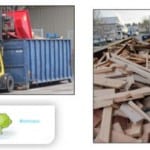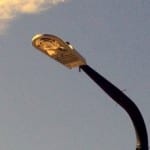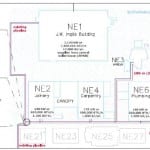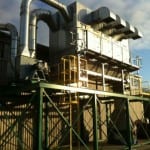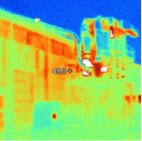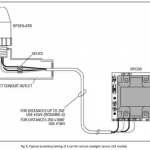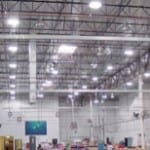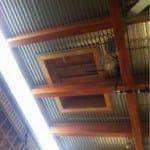Background Thirteen buildings on BCIT’s Burnaby campus have their space heating and domestic hot water heating needs met by a “district energy” system. Water is heated in natural gas-fired boilers in a central heating plant located in building SE08. The hot water is then piped underground in insulated pipes to the individual buildings. Heat transfer […]
Welding Ventilation Energy Efficient Upgrade
Background NE08 is home to the students and faculty of the Welding Program at BCIT. Welders contribute to a vast variety of BC’s industries including the production of structural steel for high-rise buildings and bridges, shipbuilding, mining, pipelines, and more. Metal welding and cutting produce air contaminants that are potentially harmful to students and faculty. […]
Cobra LED Street Lights
Here is a project you would probably not notice unless you read about it. BCIT’s Facilities and Campus Development department has replaced on April 15th, 2013 all the old lights (HID – 250 Watts) on Smith Street with new General Electric LED Cobra Head parking lights (142 Watts). The new Cobra Head LEDs save electricity (and associated costs) […]
Building A Micro-Thermal Grid For Education
District heating (sometimes called district energy or thermal grids) consists of a network of pipes that supplies heat to a ‘district’ of buildings for space heating, domestic hot water, and in some cases even cooling purposes. This network can be fed by one central or several decentralized heating sources, including waste heat (also called heat […]
Energy Efficient Smart Dust Extraction System in Joinery and Carpentry
BCIT has installed a new more efficient dust extraction system for the wood Trades buildings. The old system consisted of six constant-volume units that could be only on or off and would work at full capacity no matter how much dust was generated. The new system has two-fans that can use variable speeds. Sensors and […]
What About the Building Envelope?
Before spending money on improving the heating systems in the Factor IV buildings, shouldn’t we make sure the heat isn’t escaping the building first? It would be wasteful to heat a building full of holes. Sometimes the simple solution is the best option.
A BCIT Student Studies The Value Of Daylight Sensors In NE1 Atrium
A BCIT student completed a study to identify potential savings related to having daylight sensors in NE1’s Atrium (near the cafeteria) and all other atrium on all BCIT campuses. The idea is simple: make sure we don’t use artificial lighting (and associated energy) when not needed, i.e. when it’s a blue sky day and plenty of sunlight […]
Full Review Of Interior Lights – What Kind Of Redesign Is Needed?
With the help of Prism Engineering, a full review of interior lighting has been completed for NE2, NE4 and NE6 to look for ways to reduce energy consumption. The recommendations from the study, if all implemented, could result in energy savings of over 157,000 kWh and demand savings of 29 kW each year. The bundle […]
“Bringing Back” Daylight Under The Canopy
BCIT’s carpentry students construct and assemble many projects under a large outdoor canopy. However, even though they are outside, there is not enough daylight for them to work safely. Artificial lighting is therefore needed under the canopy roof even on a blue sky day. The good news is that the canopy was designed with the […]
Students Explore The Possibility of Welding Virtually
A team of BCIT Business Operations Management students investigated the feasibility of integrating a Virtual Welding System (VWS) into the welding program at BCIT. The purpose of the study was to determine if the integration of a VWS could reduce the environmental impact and carbon emissions within the Factor IV area, meet the requirements of […]
